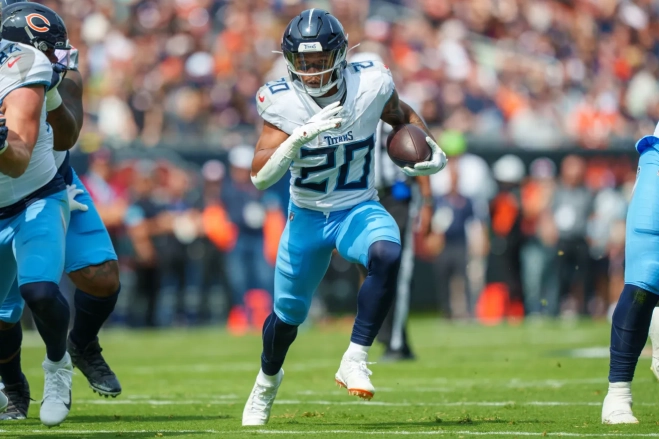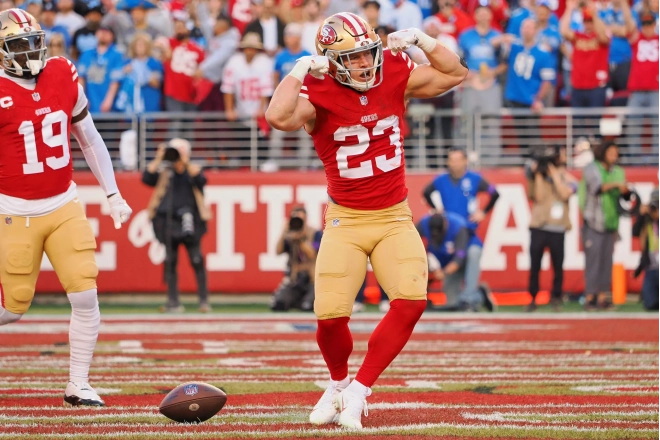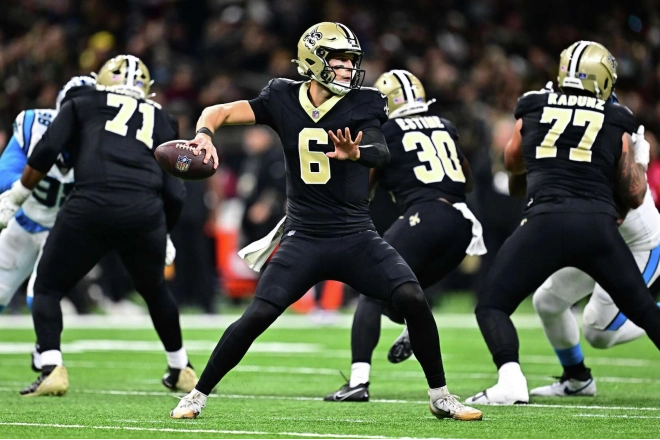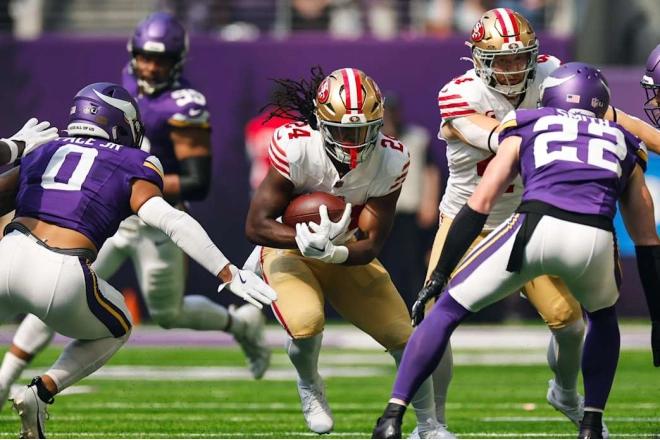Not sure how I did it, but I went 3-0 again this week. Like last week, I came back from some huge deficits thinking I had lost.
Kevin Campbell, ASL's editor, can attest to this. In our mutual keeper league his team seemed to have the game wrapped-up, but then late Sunday, his Cole Kmet (TE, Chi) flopped and my kicker, Ka'imi Fairbairn (Hou), landed 22.50 fantasy points right between the goal posts, swinging the outcome about 20 fantasy points from the projected outcome.
That's fantasy football for you! If you had any last minute point swings in your match-ups, I hope they also swung in your favor.
Okay, so down to business. I mentioned in my article last week, Dynasty: What I Learned From Week 1, that it's important to try to own the waiver wire.
I was thinking about what that actually means, and I realized that I have a kind of discipline about it that I believe makes a big difference.
So many play fantasy football by thinking they are going to win their league in the draft. So they draft their team and set their lineup each week. They only go to the waiver wire when they have an obvious need, such as to fill in for a bye week or when one of the their starters gets banged up.
I approach the waiver wire completely differently. I have N number of roster slots. I want the best possible players in all N of my roster slots. I force myself to put in waiver selections each week so that I stay active trying to find players with potential upside, and to continuously improve my team. In doing so, I also end up trading a lot of players away in my dynasty team each year, and this helps me to build a deep arsenal of draft picks.
Furthermore, I consider my team is those N roster slots PLUS every player available on waivers. Those players belong to me, not to the other teams. Why? Because I am greedy - that's why!
Sometimes other team managers can pooch a few away from me, but I try not to let that happen to the best available players too often. I am like that evil kid in the sand box, that no matter which tractor another kid goes for, I want to push him away and say "mine". And only when I see the tractor is old and rusty and falling a part, or I see a shinier, newer one, then I say - "Here, have it." Of course, we all have equal access to the free agents, and I have to wait my turn in the waiver processing cycle each week.
The point is, it is a mentality and that mentality drives me to learn all I can about the players available on the waiver wire so I can identify and keep tabs the ones with the most potential before other team managers do.
Here are the ways I do it.
First, I look at how the free agents performed over the last five weeks, sorted by average fantasy points, and how they are trending. Since this is only Week 2, the report looks like this:
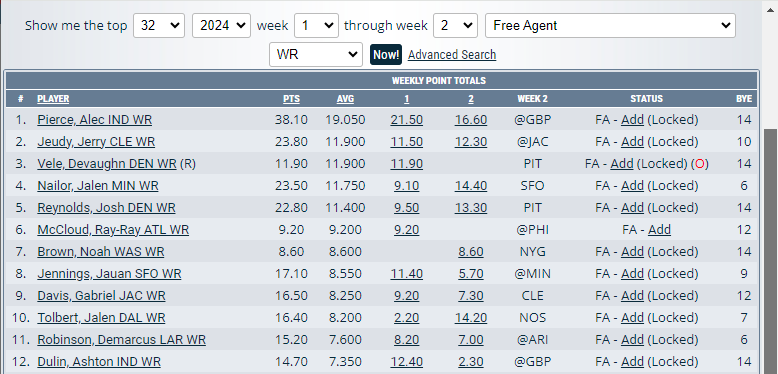
For example, at first glance Jalen Tolbert (WR, Dal) will be more interesting to me than Ashton Dulin (WR, Ind) because Tolbert trended up and Dulin trended down.
These are the things I look at when I review the players available on waivers:
- Volume: This is simply how many touches a player gets per game. I would generally take a player that is getting 8 touches a game and got no TDs last week over a player that got 2 touches, and got one TD. The player getting 8 touches is going to be more consistent, and is going to have more opportunity to score future touchdowns, that the player getting 2 touches.
- Efficiency: How well did the player do with the touches they did get? A receiver that catches 10 out of 16 targets over the last few weeks is better to me than a receiver that catches 15 out of 32 targets in the same period of time. Efficiency is the best way to predict trend. The receiver that is getting more yards per catch and more catches per targets is going to be trusted more by his coaches and quarterback and will earn more opportunity down the road. So players with high efficiency will tend to trend up, and vise versa.
- History: If a player has been in the league 5 or 6 years and has been getting between 200 to 450 total yards per season, it isn't likely that he is going to all-of-a-sudden pop up to be a fantasy stud. There are likely a few players that did that - but the probability is very low, as there is a reason coaches haven't given him more opportunity. Good players eventually make their own opportunities.
- Depth Chart / Age: I consider the free agent's age compared with other players ahead of them on the team's depth chart. I try to view it from the perspective of an NFL general manager (GM). I was heavy into Jordan Mason (RB, SF) before Christian McCaffrey (RB) went to IR because McCaffrey is an old running back for the NFL and is bound to fade soon. A GM needs to manage the team salary cap and will want younger, less expensive, players in the running back mix. For this reason, Isaac Guerendo (RB, SF) is also on my radar. Assuming we are seeing the start of the decline of an NFL great in McCaffrey, I don't think the battle for lead back is over by a long shot between Guerendo and Mason. Mason is not involved much in the passing game, at the very least Mason needs a viable back-up, and if I am a GM I am rooting for Guerendo over Mason for business reasons.
- Recent Injuries: I look for injuries on NFL's site. Search for "Notable Injuries Week N". You should see an article such as this. For example, we can learn here that Isaiah Pacheco (RB, KC) suffered an ankle injury, and then following the news on him, he is getting surgery. Carson Steele (RB), who is a rookie is going to get a shot at starting. Now, because I was doing my homework, per the above, I already had Steele on my dynasty team roster, but he will be a top pick up in leagues with less roster depth.
- Strength of Opponent: Especially for streaming kickers and defense, I consider the strength of schedule for the future week(s) equal with past performance.
I examine the top five or so players available from the waiver wire at each position based on the above attributes. And then, with these attributes in mind, I write the "Streamers for the Desperate" article each week. I write it because I can't find that information in that format anywhere else. I will look at Alex Cuilla's article afterwards to compare notes, but I play in deeper roster leagues and need more depth to my waiver wire options. It also helps me to mentally keep tabs on a lot of players that I can't immediately add to my team. Even if you are in the 14-player roster leagues, studying my Streamers for the Desperate article each week will help you gain a greater depth of knowledge for owning your own league's waiver wire.
There are a couple of other important tools that I use. I am constantly watching which players have a positive ownership trend. In MyFantasyLeague.com this feature looks like this:
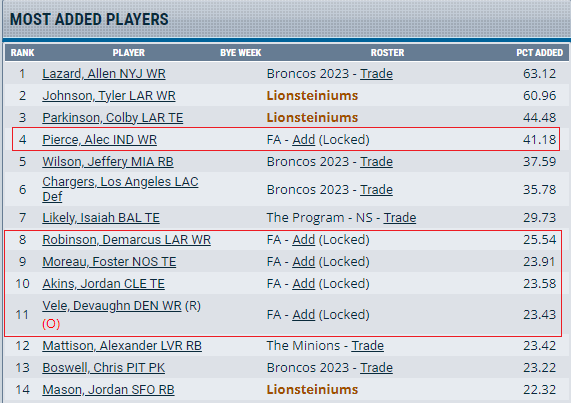
I put a red box around the players that are currently available, and that I will certainly research for Week 2.
I view the site's most added players list to benefit from the research of others. I certainly don't always go with the consensus, but it helps me quickly identify players to examine deeper. In this keeper league, my team is the Lionsteiniums and I added three players last week. Tyler Johnson (WR, LAR) and Colby Parkinson (TE, LAR) were the 2nd and 3rd most popular adds last week. I also added Jordan Mason, the 14th most popular added player, but perhaps the best. I usually am conservative with my bidding bucks, but I spent them all on Mason last week to ensure I got him, and I don't regret it.
I also view the Processed Waivers report. This is the top portion of that report in one of my keeper leagues:

It shows me who bid for which players and from this I might be able to identify a player of interest that I missed that wasn't picked up.
Summary
So in summary, I try to own the leagues waiver wire by
- Having an aggressive / greedy me-first mentality with respect to the waiver pool.
- Forcing myself to make waiver moves every week to keep the best possible players in all N of my roster slots.
- Researching top performing free agents of each position based on various attributes that relate to future potential.
- Examining the Most Added Players report to get a broad perspective from other team manager's research across many leagues.
- Reviewing the league's Processed Waivers report to learn what players other managers in my league think are valuable.
Keeping a fresh and active roster, especially in dynasty leagues, is a big factor for winning.

